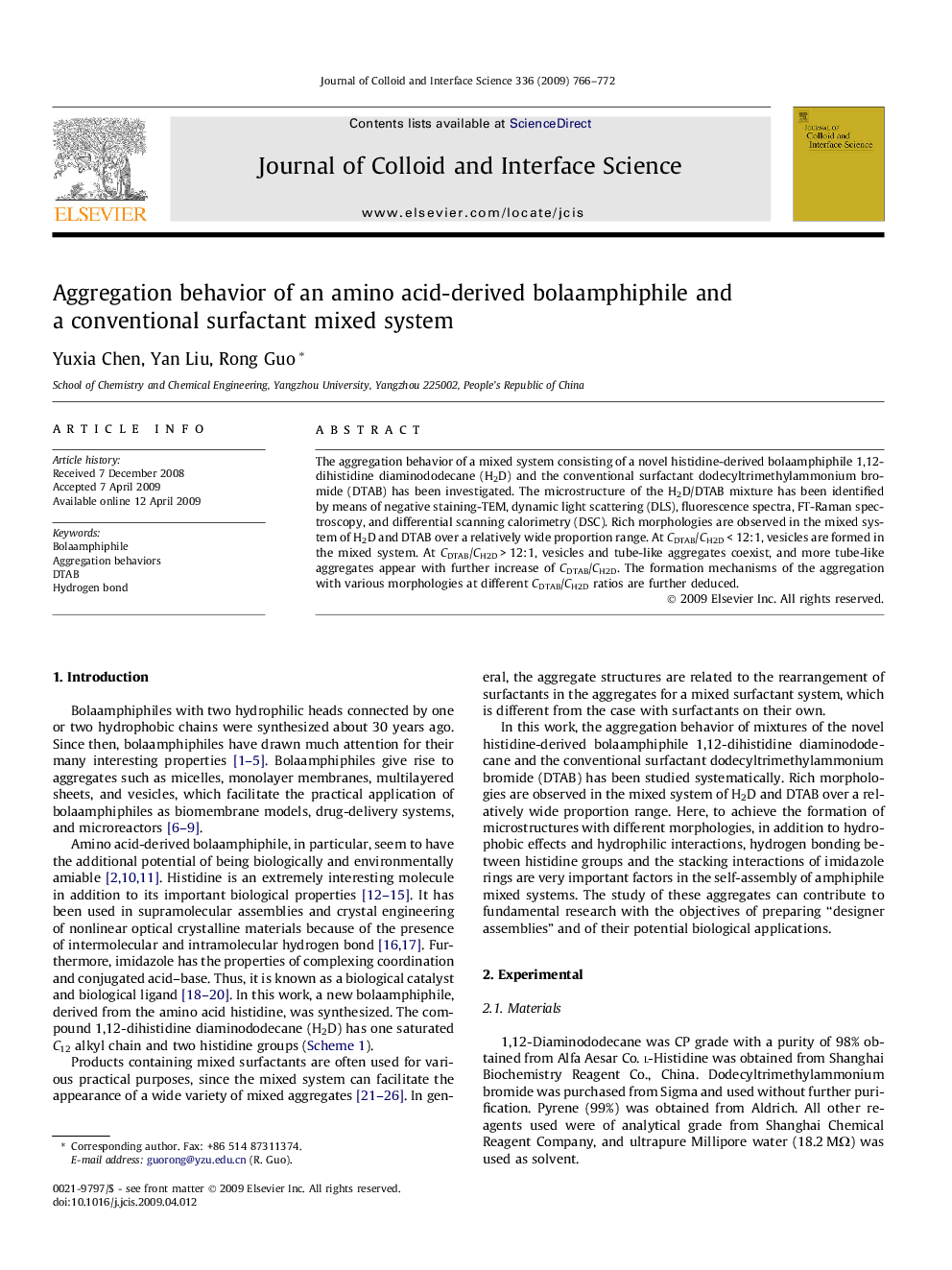| Article ID | Journal | Published Year | Pages | File Type |
|---|---|---|---|---|
| 610191 | Journal of Colloid and Interface Science | 2009 | 7 Pages |
The aggregation behavior of a mixed system consisting of a novel histidine-derived bolaamphiphile 1,12-dihistidine diaminododecane (H2D) and the conventional surfactant dodecyltrimethylammonium bromide (DTAB) has been investigated. The microstructure of the H2D/DTAB mixture has been identified by means of negative staining-TEM, dynamic light scattering (DLS), fluorescence spectra, FT-Raman spectroscopy, and differential scanning calorimetry (DSC). Rich morphologies are observed in the mixed system of H2D and DTAB over a relatively wide proportion range. At CDTAB/CH2D < 12:1, vesicles are formed in the mixed system. At CDTAB/CH2D > 12:1, vesicles and tube-like aggregates coexist, and more tube-like aggregates appear with further increase of CDTAB/CH2D. The formation mechanisms of the aggregation with various morphologies at different CDTAB/CH2D ratios are further deduced.
Graphical abstractProposed formation mechanism for aggregates of different microstructures in the studied H2D/DTAB mixed surfactant system.Figure optionsDownload full-size imageDownload as PowerPoint slide
